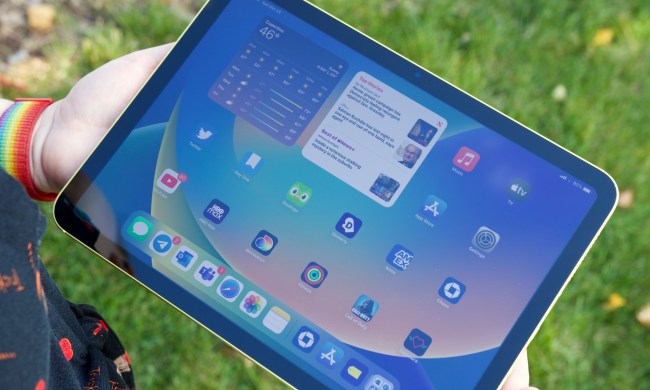“While it can't compete on fashion-factor, it does manage respectable noise cancellation...”
- Above-average noise cancellation; small
- attractive form factor; accurate voice recognition
- Fit doesn't inspire confidence; durability issues; only accesses eight speed dial contacts
Summary
Picking up a Bluetooth headset to gab on the go may spare you the distraction of pinning a phone to your ear with one hand while driving, but if you still need the handset to browse your contacts, dial, and hang up, you’re far from free. Enter BlueAnt’s Q1. Though many phones work with a handful of voice commands preprogrammed into them, the Q1 is one of the few headsets that actually run almost entirely by speaking to it.

Looking at the BlueAnt Q1 beside the trendy Aliph Jawbone Prime, it’s hard not to draw a comparison. BlueAnt has clearly borrowed some of Aliph’s swoopy styling for the Q1, but left behind some of the more exotic textures and colors in favor of a brushed-aluminum finish that looks a little less destined for the runway and more for the office or BMW.
The tiny 10.9-gram headset has only two inputs: a multi-purpose button with a glowing BlueAnt logo, and a volume rocker. The ant button must be used to fire up the headset and to cue the headset when you’re about to say a command, but otherwise, everything else can be accomplished just by speaking. Since it doesn’t rely on the phone for voice recognition, even pairing can be accomplished this way.
Besides the unique voice recognition aspect, the Q1 also hosts a range of noise cancellation features, including dual microphones and an internal wind shield, with the option to switch between standard and maximum isolation in different situations.
A single headset can remember pairing info for up to eight different devices, and multipoint technology allows it to connect to two at a time and switch between them – a work phone and a personal phone, for instance. BlueAnt claims the Q1 will deliver four hours of talk time and 100 hours on standby.

Like most Bluetooth headsets, the Q1 uses interchangeable silicon tips to fit the speaker portion into the ear, along with an ear loop to provide additional support. Though the silicon tips felt easy on the ears, they didn’t quite fit snugly enough – making us constantly question whether the headset was seated properly, even when audio came through loud and clear. We eventually learned to trust it, but we wouldn’t call the fit reassuring.
Though the Q1 felt reasonably well built, we did find one major issue with it: It broke. After pocketing the device during a bike ride, it emerged in two pieces. The black plastic nub that the rubber earpieces connect to snapped clear off the rest of the headset. A $2.69 bottle of Krazy Glue put us back in business, but the experience didn’t exactly give us warm fuzzy thoughts on durability. Even if putting it in a pocket isn’t the ideal way to store the Q1, it isn’t unreasonable to expect that many users will, and we’re afraid this device just doesn’t stand up to it.
After holding down the main Q1 button for three seconds to power it up and entering the pairing code for it in your cell phone (it goes into pairing mode automatically on start), the Q1 is ready to roll. Pressing the BlueAnt button on the Q1 primes it for voice commands, with an audible ding a second later serving as a cue to speak. Most of the commands, like “redial,” “check battery” or “call speed dial one” felt very intuitive and easy to remember. But only being able to access voice dial slots one through eight imposes a pretty severe limitation: Outside your circle of eight close friends, you’ll have to pick up the phone. You can switch to “phone commands” to use your phone’s own voice dialing, but that seems to defeat the purpose of a headset with built-in voice recognition, to us anyway.
As for accuracy, voice recognition works quite admirably for a headset that requires no learning, but we did occasionally encounter missed commands. Learning to enunciate more clearly usually clears this up, though.

BlueAnt scores major points for the Q1 instruction booklet, which somehow folds down to the size of a matchbox, but also contains just about everything you need to know about the headset. It’s handy to carry around a cheat sheet until you’ve mastered the commands you need.
Conclusion
Unlike many of BlueAnt’s previous budget-oriented headsets, the $130 price tag on the Q1 edges it directly into the same high-end turf occupied by the class-leading Jawbone Prime. While it can’t compete on fashion-factor, it does manage respectable noise cancellation if you don’t plan on talking from the deck of an aircraft carrier, and the smooth voice recognition lends it an ease of use that’s hard to beat. Unfortunately, access to only eight speed dial contacts dampens this feature quite a bit in real-life use, the fit felt soggy, and sadly, we also had to dock the score for breakage.
Pros:
- Above-average noise cancellation
- Small, attractive form factor
- Accurate voice recognition
Cons:
- Fit doesn’t inspire confidence
- Durability issues
- Only accesses eight speed dial contacts



